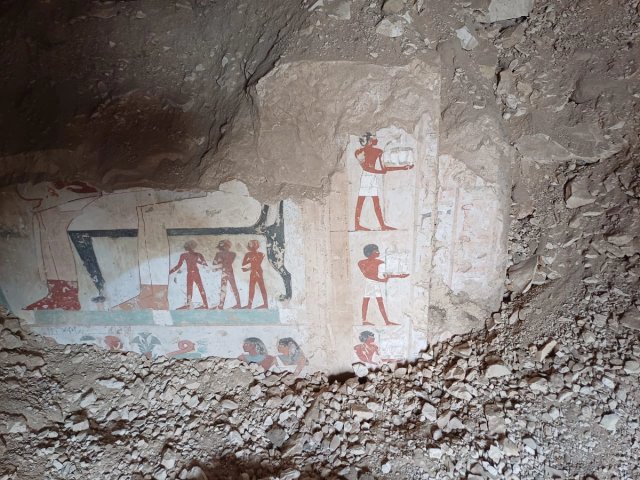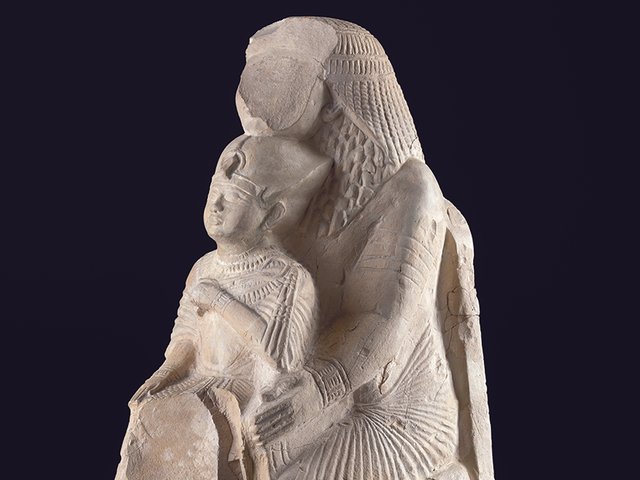Statues depicting the lion-headed goddess Sekhmet line the walls, some seated, some standing. Sphinxes rest, contemplative, their figures receding into space. Far away in this shimmering, seemingly endless landscape, King Seti II stands proudly, his long slender figure topped with an ornate crown.
This is not, in fact, a temple complex in Egypt, but the Museo Egizio in Turin, the world’s oldest museum entirely dedicated to ancient Egyptian culture—currently at a critical juncture in its radical €24m renovation project. The room is one of the two reimagined spaces making up the Gallery of the Kings, the Instagrammable heart of the institution and the home of large-scale sculptures discovered at the complex of Karnak in Thebes, modern-day Luxor.
Key to the redesign of these spaces—overseen by the Dutch studio Office for Metropolitan Architecture (OMA)—has been a focus on bringing visitors closer to these objects, as they would have been experienced in situ, thousands of years ago. Black paint, intense spotlighting and thick walls put in place by the rooms’ previous designer, scenographer Dante Ferretti, in 2006, have been stripped away, and light has been allowed to pour in.
The monumental sculptures have been placed on flexible, shorter pedestals, resulting in many of the figures greeting visitors at eye level. The walls have been cased in reflective aluminium, allowing visitors to see behind sculptures and to imagine themselves as part of this ethereal, desert-like space.
“One of the major ideas was to create a space in which the statues for the first time become protagonists and are also visible and appreciable from close up,” says Johannes Auenmüller, a curator at the museum. “In the earlier installation, pedestals were about 70cm high, so all of these statues were towering above the visitors. We wanted to bring them down and in this way do more justice to their original placement in the Egyptian temples.”
This sense of placing visitors in Karnak has been evoked in several different, subtle ways. On the walls, alongside wall texts, are simple line drawings giving context on where the statues would have been located. Behind the sphinxes, for example, two rows of these figures are shown receding into the distance towards the entrance of a building. Meanwhile, in the second room—devoted to the inner spaces of Karnak’s temples and so filled with statues of kings and gods—is a fragment depicting some feet. A drawing above that fragment reconstructs the work in full, showing it to be a statue of King Merneptah.
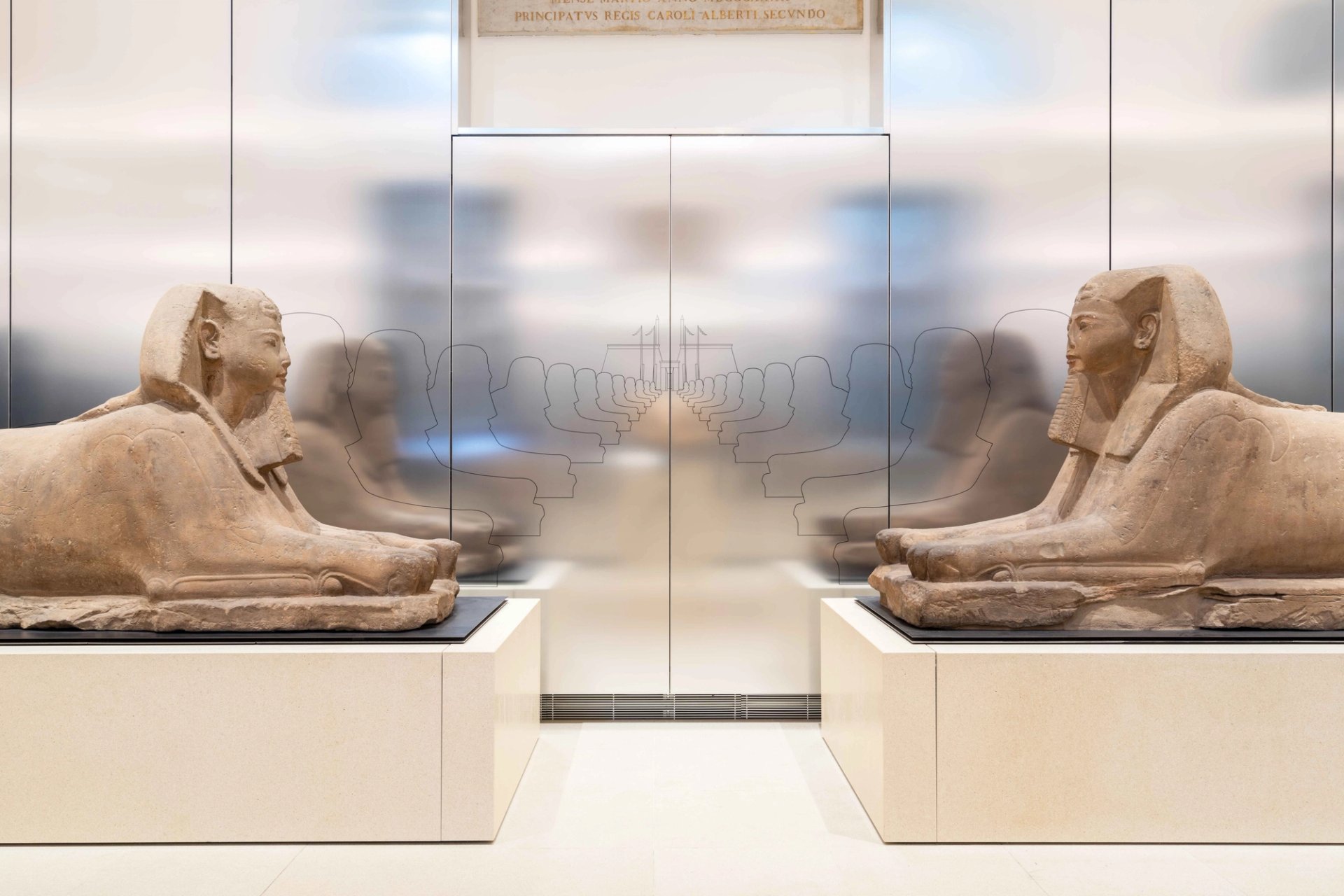
Line drawings provide insight into how the objects would have been presented in their original context
Photo: Marco Cappelletti for OMA and Andrea Tabocchini Architecture
When it comes to the objects themselves, new light has been shone, literally and metaphorically, on several masterpieces. In the centre of the second room is a statue of Ramesses II, a sceptre in his hand, his toned body visible through his ceremonial dress. It is a work with such refined detailing that the French scholar Jean-François Champollion, who deciphered the Rosetta Stone, described it as “the Egyptian Apollo Belvedere”, referencing the much-celebrated sculpture of the Roman god from antiquity. In its new position, moved away from the walls, the Ramesses statue can be appreciated in the round and the long column of text on its back can be viewed—with an accompanying QR code linking to an interpretation.
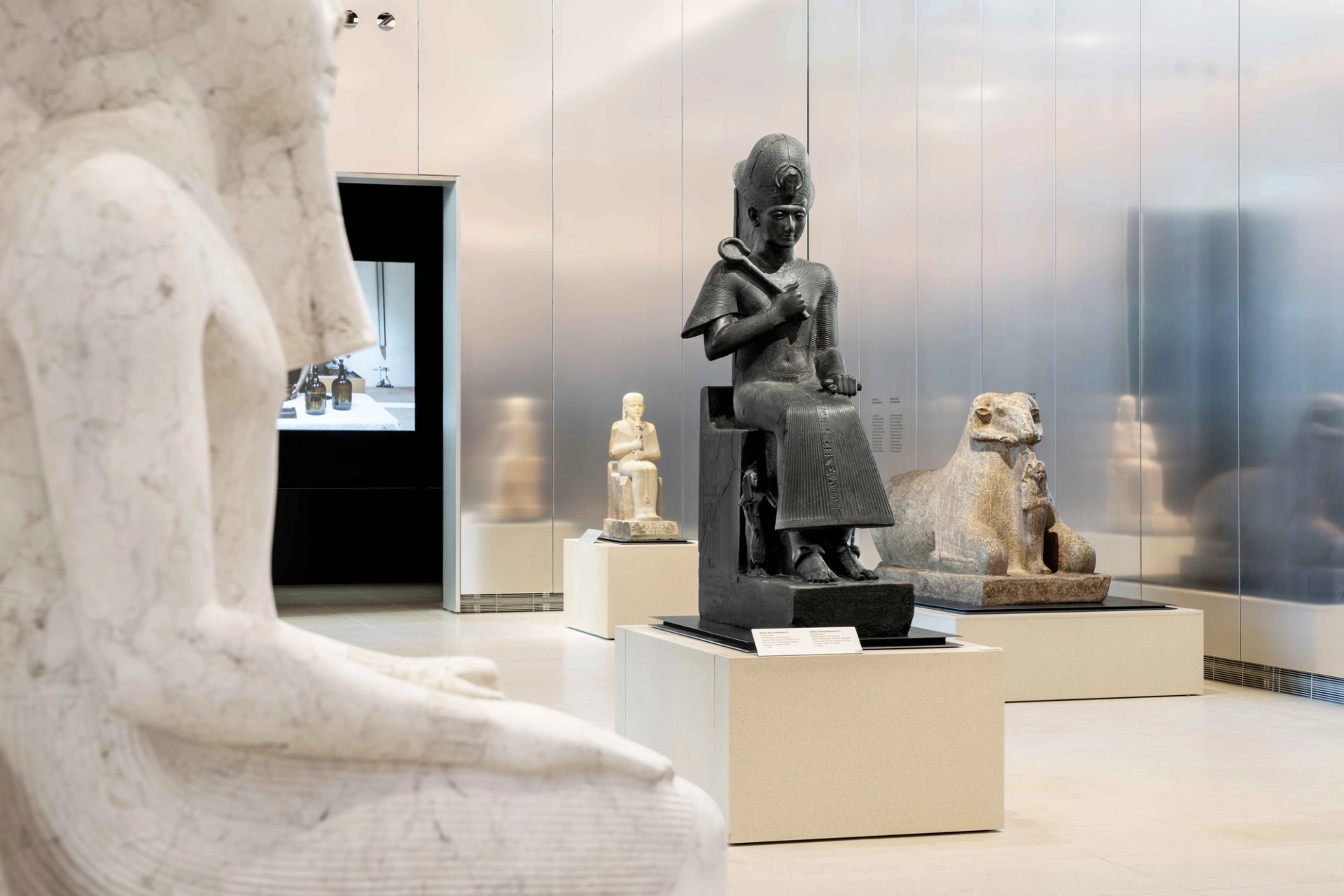
The statue of Ramesses II in the Gallery of the Kings. The statue of Ptah is shown behind it, to the left
Photo: Marco Cappelletti for OMA and Andrea Tabocchini Architecture
Conservation processes have furthered this sense of revelation. In the same room, the small statue of Ptah, the Egyptian god of creation, has been cleaned and conserved, revealing the original colouring on the side of the figure’s throne. This kind of work not only enhances visitors’ experience but also provides experts with new insights into how other sculptures may have been decorated. “By making them fit for this room, we have also learned more about the objects in our care,” Auenmüller says.
A complex tribute
The reimagining of the Gallery of Kings follows an overhaul of spaces elsewhere in the museum, including a permanent display that has brought almost the entire ceramic collection out into “open storage”. Taken together, the work feels like a fittingly stirring reconfiguration of what is one of the greatest repositories of ancient Egyptian art outside of Egypt, and one that speaks to the complexity of the questions that arise around both the museum’s origins and contemporary function.
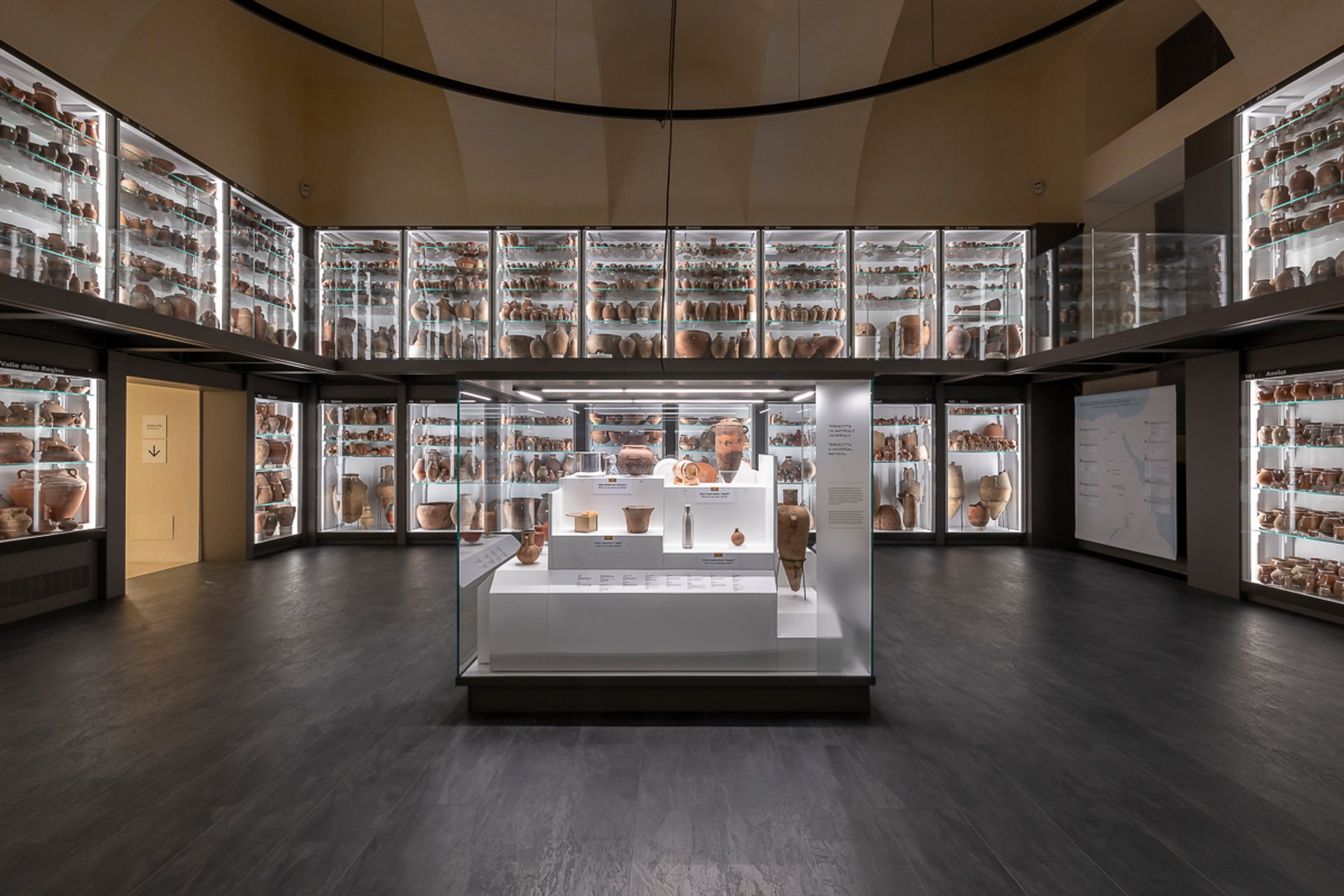
Installation view of the Museo Egizio’s new permanent display, Materiality. The Shape of Time
Courtesy Museo Egizio
The Museo Egizio was founded in 1824, originally as a space to house a remarkable collection purchased by the ruling Savoy family from the Piedmontese Bernardino Drovetti. Drovetti, who had pro-French ideals from a young age, worked in Egypt under Napoleon, where he witnessed first hand Western countries’ growing fascination with and demand for Egyptian antiquities. Together with a team including the French sculptor Jean-Jacques Rifaud, he began research and excavations that he would continue after Napoleon fell from power in 1814—using the connections he had built in the region to gain the necessary authorisations.
The works he and his colleagues amassed, and eventually sold to King Carlo Felice for 400,000 lire, included the objects dug up at Karnak in 1818, as well as thousands of other objects. Once purchased, it was housed in the striking Baroque palazzo that the museum resides in today—many features of which have been beautifully exposed through the renovation—sharing the building with the Academy of Sciences. Champollion came to study the collection in the year of its arrival, beginning the first partial catalogue. It was, for a short while, the only collection of Egyptian antiquities that had arrived in Europe from Egypt: a key player in a flurry of activity that also saw the Louvre, the British Museum and others amass their own holdings.
The arrival of the Drovetti collection, which built on a much smaller foundation set by voyager and professor Vitaliano Donati, who died on his journey in 1762, cemented Turin’s reputation as a true capital for ancient Egyptian culture. Its holdings would continue to grow considerably, particularly under Ernesto Schiaparelli, the museum’s director from 1894, and today total some 40,000 objects. This makes it unsurprising to hear suggestions that, as Auenmüller puts it, Egyptology “began, in a way, in Turin”.
Today, however, any such ideas inevitably brings to the surface questions around whether the museum is the appropriate home for such objects. Speaking on this topic at the museum’s opening, its director Christian Greco points to very strong relations between the institution and Egypt. “We haven't had any calls at all for repatriation,” he says. “Today we had the ministry of antiquities, the secretary general Mohamed Ismail, the director of the Egyptian Museum [in Caio], Ali Abdullah Hime, His Excellency the Ambassador of Egypt in Rome, and the cultural attaché. We don't have any standing issue.”
The museum, he argues, is ethical in many of the ways that a contemporary institution of its kind should be. It carefully labels displays of human remains, no longer makes acquisitions—instead focusing its resources on researching and caring for what it does have—and rarely accepts gifts.
Yet he acknowledges that there is room for improvement, and a need to address the past. In the newly designed spaces of the museum, this has been enacted through two contemporary commissions, one by the Paris-based Lebanese artist Ali Cherri and the other by the Netherlands-based Egyptian artist Sara Sallam. For his project, Cherri has placed bronze prosthetic eyes on works from the collection that have had these features removed by looters and through acts of colonial destruction. Sallam's project, meanwhile, includes a collage highlighting the colonial context in which Drovetti’s excavations took place, and a film depicting the artist taking cyanotype prints of the museum’s Sekhmet statues back to Egypt.
“My question, which is a big question after 200 years, is are we a place of destruction or a place of construction and conservation?," Greco says. "The answer is we are both. Sara Sallam shows that, I think, very well, because first there is this j’accuse of the fact that these statues have gone back, but at the same time, with her ritual, actually she's giving a new place to the statues. The statues find their place back in a museum.”
A civic mission
These debates are not going anywhere, and there is a feeling that if Museo Egizio is to survive, it will need to bolster the way in which it engages in them. This is especially true given that today the museum is run by a private foundation—the first of its kind in Italy—and relies on ticket sales for nearly 80% of its funding, making it, arguably, more vulnerable to public opinion than others. Yet on its side is a director with a clear and deep interest in museology—his introduction to the catalogue is titled “What is a Museum”—but also in pushing his own institution in new directions.
Next year, the renovation project—funded with the help of the Italian culture ministry, the museum’s founding partners such as the City of Turin, private sponsors and more—will complete with the unveiling of the Piazza Egizia, a new glass-covered courtyard space that will connect the museum together and be free to enter. It is part of a civic mission that has already begun with decision to grant access to the Temple of Ellesyia, donated to Italy by the Egyptian government in 1960, without charge and the creation of a funerary garden, aimed at giving the public a fresh view of the cycles of nature. This sense of connection has been furthered with the Gallery of the Kings too, the rendering of Seti II visible from the street through the newly opened-up windows.
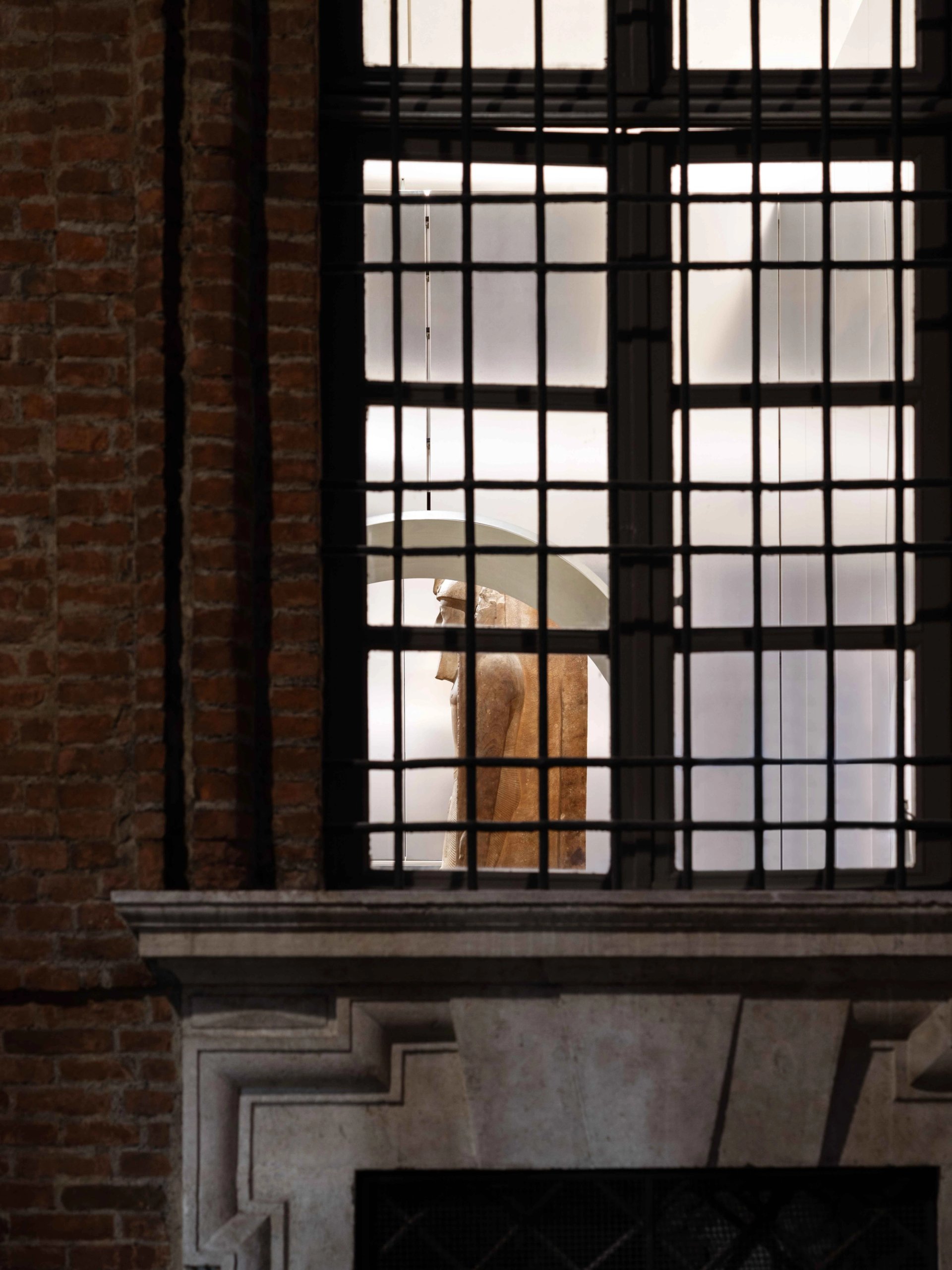
The statue of King Seti II visible from the street outside the museum
Photo: Marco Cappelletti for OMA and Andrea Tabocchini Architecture
Underlying all of this is a sense of a fundamental belief that, despite the complications, the culture of ancient Egypt still has much to offer society in Turin and around the globe. “Whether we like it or not, Egypt is part of the history of our Western society from Plato onwards,” Greco says. “I think studying Egypt, like studying any other ancient civilisation is a way to get to know ourselves.”
At the Museo Egizio, two centuries on, this process of familiarisation is ongoing, with new research taking place all the time. As the visiting scholar Ray Johnson, a retired professor from the University of Chicago, puts it: “With Egyptology, people think, oh it's done, you've found everything, you've done everything. But it's not true. Egyptology is just beginning.”





